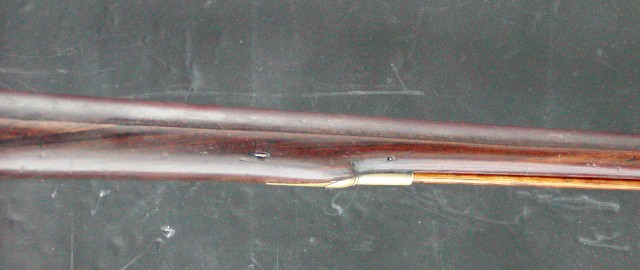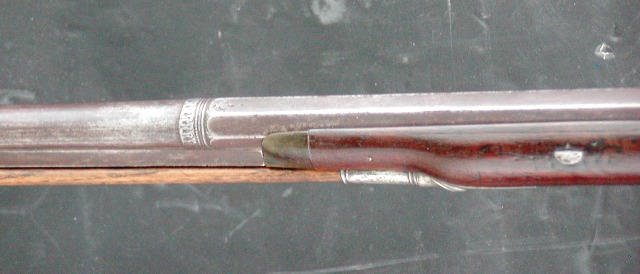Hi,
American makers did not seem to have any convention for orienting barrel keys. However, as Rudyard wrote, all British guns with keys have the heads on the side plate side of the gun. Here are examples:




Snake Pleskin, it is not hard to pin the keys in place. I believe the GPR has escutcheon plates surrounding the keys that are screwed into the stock. Simply drill a series of 1/16" holes in a line down the center of the flat key. Cut between the holes with a jeweler's saw and file the slot even. Make sure it is long enough and close enough to the end of the key to clear the barrel lug. Remove the escutcheon plates on right or left side of the stock, doesn't matter. Cut short 1/16" pins from finishing nails or brads that will fit vertically inside the plates and go through the slots in the keys. Cut a little groove in the wood to fit the pin behind the plate and then put the key in the plate, position the pin in the slot behind the plate and place the whole assembly in the mortise for the plate. Screw it in place. Make sure the slot is filed wide enough so it slides easily on the pin. On guns without removable escutcheon plates, cut and file the slot in the key, place the key all the way in the stock, mark for a hole in the barrel channel such that it will allow the key to be slid out far enough to clear the barrel lug. Then, using a tiny drill (#58 or #59) drill into the barrel channel down into the slot of the key. Drill only as far as the bit reaches the key and goes through the slot but no further. Cut a short pin from the pointed end of a tiny (1/16" or less) brad. Place the pin in the hole in the barrel channel and tap the pin in until the point digs into the stock below the key. Don't be too aggressive. Just tap enough to sink the point and keep the pin in place. Grind or file off any excess pin sticking up in the barrel channel. Once pinned, the key can never be removed so make sure it fits the stock and barrel well and , slides smoothly. You can test how well it works with the pin in place but before setting the pin. On thicker stocks with big wide keys, you can replace the pin with a tiny screw that can be removed.
dave











